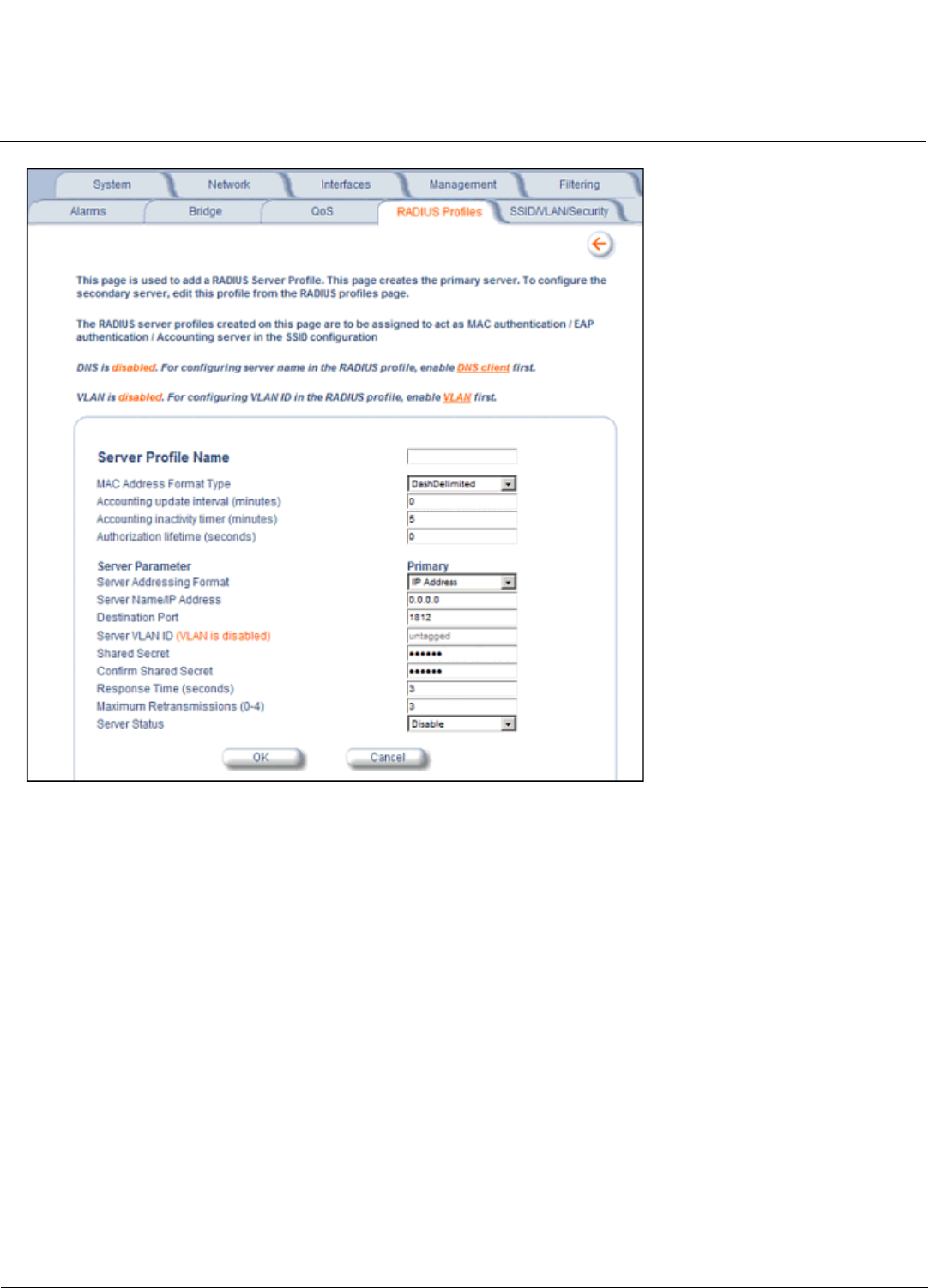Access Point User Guide
Table Of Contents
- Introduction
- Installation and Initialization
- System Status
- Advanced Configuration
- System
- Network
- Interfaces
- Management
- Filtering
- Alarms
- Bridge
- QoS
- Radius Profiles
- SSID/VLAN/Security
- Monitoring
- Commands
- Troubleshooting
- Command Line Interface (CLI)
- General Notes
- Command Line Interface (CLI) Variations
- CLI Command Types
- Using Tables and Strings
- Configuring the AP using CLI commands
- Set Basic Configuration Parameters using CLI Commands
- Set System Name, Location and Contact Information
- Set Static IP Address for the AP
- Change Passwords
- Set Network Names for the Wireless Interface
- Enable 802.11d Support and Set the Country Code
- Enable and Configure TX Power Control for the Wireless Interface(s)
- Configure SSIDs (Network Names), VLANs, and Profiles
- Download an AP Configuration File from your TFTP Server
- Backup your AP Configuration File
- Set up Auto Configuration
- Other Network Settings
- Configure the AP as a DHCP Server
- Configure the DNS Client
- Configure DHCP Relay
- Configure DHCP Relay Servers
- Maintain Client Connections using Link Integrity
- Change your Wireless Interface Settings
- Set Ethernet Speed and Transmission Mode
- Set Interface Management Services
- Configure Syslog
- Configure Intra BSS
- Configure Wireless Distribution System
- Configure MAC Access Control
- Set RADIUS Parameters
- Set Rogue Scan Parameters
- Set Hardware Configuration Reset Parameters
- Set VLAN/SSID Parameters
- Set Security Profile Parameters
- CLI Monitoring Parameters
- Parameter Tables
- CLI Batch File
- ASCII Character Chart
- Specifications
- Technical Support
- Statement of Warranty
- Regulatory Compliance

Advanced Configuration AP-4000 Series User Guide
Radius Profiles
109
Figure 4-37 Add RADIUS Server Profile
• Server Profile Name: the profile name. This is the name used to associated a VLAN to the profile. See
Configuring Security Profiles. The Server Profile Name is also used in the Configure > Management > Services
page to specify the RADIUS profile to be used for RADIUS Based Management Access.
• MAC Address Format Type: This parameter should correspond to the format in which the clients’ 12-digit MAC
addresses are listed within the RADIUS server. Available options are:
— Dash delimited: dash between each pair of digits: xx-yy-zz-aa-bb-cc
— Colon delimited: colon between each pair of digits: xx:yy:zz:aa:bb:cc
— Single dash delimited: dash between the sixth and seventh digits: xxyyzz-aabbcc
— No delimiters: No characters or spaces between pairs of hexadecimal digits: xxyyzzaabbcc
• Accounting update interval: Enter the time interval (in minutes) for sending Accounting Update messages to the
RADIUS server. A value of 0 (default) means that the AP will not send Accounting Update messages.
• Accounting inactivity timer: Enter the accounting inactivity timer. This parameter supports a value from 1-60
minutes. The default is 5 minutes.
• Authorization lifetime: Enter the time, in seconds, each client session may be active before being automatically
re-authenticated. This parameter supports a value between 900 and 43200 seconds. The default is 0 (disabled).
• Server Addressing Format: select IP Address or Name. If you want to identify RADIUS servers by name, you
must configure the AP as a DNS Client. See DNS Client for details.
• Server Name/IP Address: Enter the server’s name or IP address.










